The AMD Radeon R9 Fury Review, Feat. Sapphire & ASUS
by Ryan Smith on July 10, 2015 9:00 AM ESTMeet The ASUS STRIX R9 Fury
Our second card of the day is ASUS’s STRIX R9 Fury, which arrived just in time for the article cutoff. Unlike Sapphire, Asus is releasing just a single card, the STRIX-R9FURY-DC3-4G-GAMING.
| Radeon R9 Fury Launch Cards | |||||
| ASUS STRIX R9 Fury | Sapphire Tri-X R9 Fury | Sapphire Tri-X R9 Fury OC | |||
| Boost Clock | 1000MHz / 1020MHz (OC) |
1000MHz | 1040MHz | ||
| Memory Clock | 1Gbps HBM | 1Gbps HBM | 1Gbps HBM | ||
| VRAM | 4GB | 4GB | 4GB | ||
| Maximum ASIC Power | 216W | 300W | 300W | ||
| Length | 12" | 12" | 12" | ||
| Width | Double Slot | Double Slot | Double Slot | ||
| Cooler Type | Open Air | Open Air | Open Air | ||
| Launch Date | 07/14/15 | 07/14/15 | 07/14/15 | ||
| Price | $579 | $549 | $569 | ||
With only a single card, ASUS has decided to split the difference between reference and OC cards and offer one card with both features. Out of the box the STRIX is a reference clocked card, with a GPU clockspeed of 1000MHz and memory rate of 1Gbps. However Asus also officially supports an OC mode, which when accessed through their GPU Tweak II software bumps up the clockspeed 20MHz to 1020MHz. With OC mode offering sub-2% performance gains there’s not much to say about performance; the gesture is appreciated, but with such a small overclock the performance gains are pretty trivial in the long run. Otherwise at stock the card should see performance similar to Sapphire’s reference clocked R9 Fury card.
Diving right into matters, for their R9 Fury card ASUS has opted to go with a fully custom design, pairing up a custom PCB with one of the company’s well-known DirectCU III coolers. The PCB itself is quite large, measuring 10.6” long and extending a further .6” above the top of the I/O bracket. Unfortunately we’re not able to get a clear shot of the PCB since we need to maintain the card in working order, but judging from the design ASUS has clearly overbuilt it for greater purposes. There are voltage monitoring points at the front of the card and unpopulated positions that look to be for switches. Consequently I wouldn’t be all that surprised if we saw this PCB used in a higher end card in the future.
Moving on, since this is a custom PCB ASUS has outfitted the card with their own power delivery system. ASUS is using a 12 phase design here, backed by the company’s Super Alloy Power II discrete components. With their components and their “auto-extreme” build process ASUS is looking to make the argument that the STRIX is a higher quality card, and while we’re not discounting those claims they’re more or less impossible to verify, especially compared to the significant quality of AMD’s own reference design.
Meanwhile it comes as a bit of a surprise that even with such a high phase count, ASUS’s default power limits are set relatively low. We’re told that the card’s default ASIC power limit is just 216W, and our testing largely concurs with this. The overall board TBP is still going to be close to AMD’s 275W value, but this means that Asus has clamped down on the bulk of the card’s TDP headroom by default. The card has enough headroom to sustain 1000MHz in all of our games – which is what really matters – while FurMark runs at a significantly lower frequency than any R9 Fury series cards built on AMD’s PCB as a result of the lower power limit. As a result ASUS also bumps up the power limit by 10% when in OC mode to make sure there’s enough headroom for the higher clockspeeds. Ultimately this doesn’t have a performance impact that we can find, and outside of FurMark it’s unlikely to save any power, but given what Fiji is capable of with respect to both performance and power consumption, this is an interesting design choice on ASUS’s part.
PCB aside, let’s cover the rest of the card. While the PCB is only 10.6” long, ASUS’s DirectCU III cooler is larger yet, slightly overhanging the PCB and extending the total length of the card to 12”. Here ASUS uses a collection of stiffeners, screws, and a backplate to reinforce the card and support the bulky heatsink, giving the resulting card a very sturdy design. In a first for any design we’ve seen thus far, the backplate is actually larger than the card, running the full 12” to match up with the heatsink, and like the Sapphire backplate includes a hole immediately behind the Fiji GPU to allow the many capacitors to better cool. Meanwhile builders with large hands and/or tiny cases will want to make note of the card’s additional height; while the card will fit most cases fine, you may want a magnetic screwdriver to secure the I/O bracket screws, as the additional height doesn’t leave much room for fingers.
For the STRIX ASUS is using one of the company’s triple-fan DirectCU III coolers. Starting at the top of the card with the fans, ASUS calls the fans on this design their “wing-blade” fans. Measuring 90mm in diameter, ASUS tells us that this fan design has been optimized to increase the amount of air pressure on the edge of the fans.
Meanwhile the STRIX also implements ASUS’s variation of zero fan speed idle technology, which the company calls 0dB Fan technology. As one of the first companies to implement zero fan speed idling, the STRIX series has become well known for this feature and the STRIX R9 Fury is no exception. Thanks to the card’s large heatsink ASUS is able to power down the fans entirely while the card is near or at idle, allowing the card to be virtually silent under those scenarios. In our testing this STRIX card has its fans kick in at 55C and shutting off again at 46C.
| ASUS STRIX R9 Fury Zero Fan Idle Points | ||||
| GPU Temperature | Fan Speed | |||
| Turn On | 55C | 28% | ||
| Turn Off | 46C | 25% | ||
As for the DirectCU III heatsink on the STRIX, as one would expect ASUS has gone with a large and very powerful heatsink to cool the Fiji GPU underneath. The aluminum heatsink runs just shy of the full length of the card and features 5 different copper heatpipes, the largest of the two coming in at 10mm in diameter. The heatpipes in turn make almost direct contact with the GPU and HBM, with ASUS having installed a thin heatspeader of sorts to compensate for the uneven nature of the GPU and HBM stacks.
In terms of cooling performance AMD’s Catalyst Control Center reports that ASUS has capped the card at 39% fan speed, though in our experience the card actually tops out at 44%. At this level the card will typically reach 44% by the time it hits 70C, at which point temperatures will rise a bit more before the card reaches homeostasis. We’ve yet to see the card need to ramp past 44%, though if the temperature were to exceed the temperature target we expect that the fans would start to ramp up further. Without overclocking the highest temperature measured was 78C for FurMark, while Crysis 3 topped out at a cooler 71C.
Moving on, ASUS has also adorned the STRIX with a few cosmetic adjustments of their own. The top of the card features a backlit STRIX logo, which pulsates when the card is turned on. And like some prior ASUS cards, there are LEDs next to each of the PCIe power sockets to indicate whether there is a full connection. On that note, with the DirectCU III heatsink extending past the PCIe sockets, ASUS has once again flipped the sockets so that the tabs face the rear of the card, making it easier to plug and unplug the card even with the large heatsink.
Since this is an ASUS custom PCB, it also means that ASUS has been able to work in their own Display I/O configuration. Unlike the AMD reference PCB, for their custom PCB ASUS has retained a DL-DVI-D port, giving the card a total of 3x DisplayPorts, 1x HDMI port, and 1x DL-DVI-D port. So buyers with DL-DVI monitors not wanting to purchase adapters will want to pay special attention to ASUS’s card.
Finally, on the software front, the STRIX includes the latest iteration of ASUS’s GPU Tweak software, which is now called GPU Tweak II. Since the last time we took at look at GPU Tweak the software has undergone a significant UI overhaul, with ASUS giving it more distinct basic and professional modes. It’s through GPU Tweak II that the card’s OC mode can be accessed, which bumps up the card’s clockspeed to 1020MHz. Meanwhile the other basic overclocking and monitoring functions one would expect from a good overclocking software package are present; GPU Tweak II allows control over clockspeeds, fan speeds, and power targets, while also monitoring all of these features and more.
GPU Tweak II also includes a built-in copy of the XSplit game broadcasting software, along with a 1 year premium license. Finally, perhaps the oddest feature of GPU Tweak II is the software’s Gaming Booster feature, which is ASUS’s system optimization utility. Gaming Booster can adjust the system visual effects, system services, and perform memory defragmentation. To be frank, ASUS seems like they were struggling to come up with something to differentiate GPU Tweak II here; messing with system services is a bad idea, and system memory defragmentation is rarely necessary given the nature and abilities of Random Access Memory.
Wrapping things up, the ASUS STRIX R9 Fury will be the most expensive of the R9 Fury launch cards. ASUS is charging a $30 premium for the card, putting the MSRP at $579.


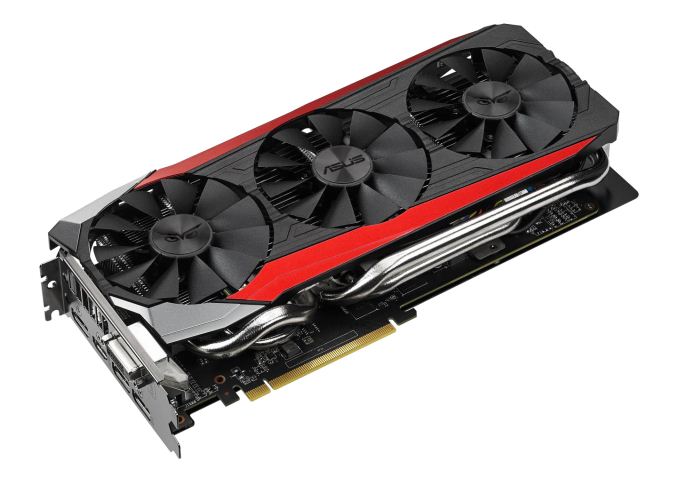
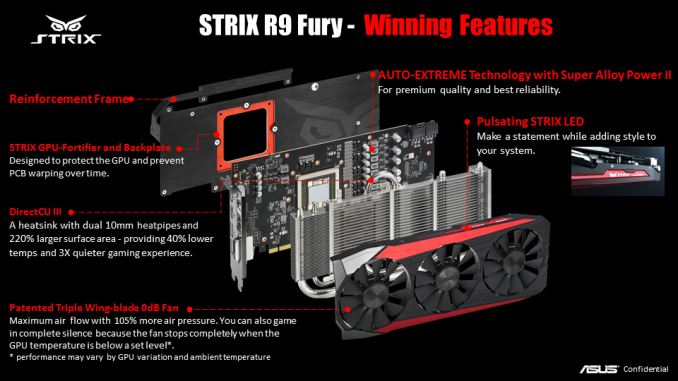

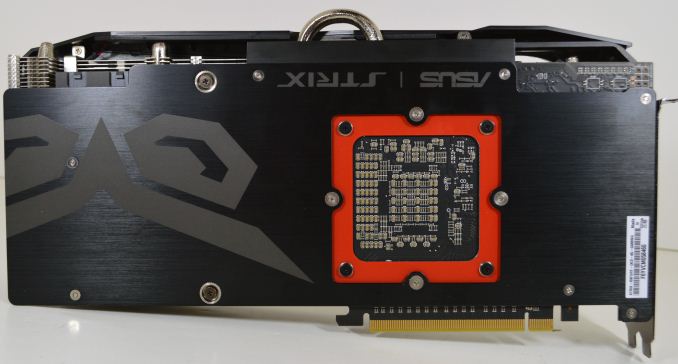
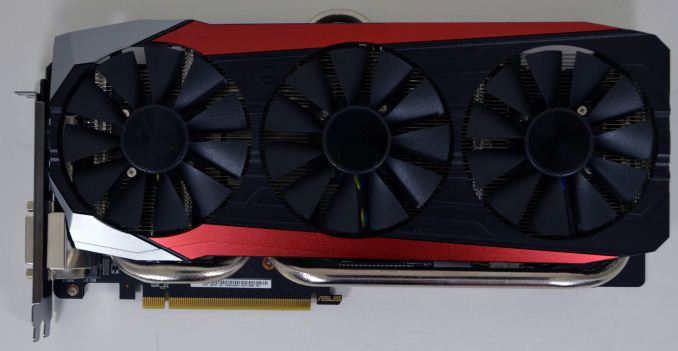

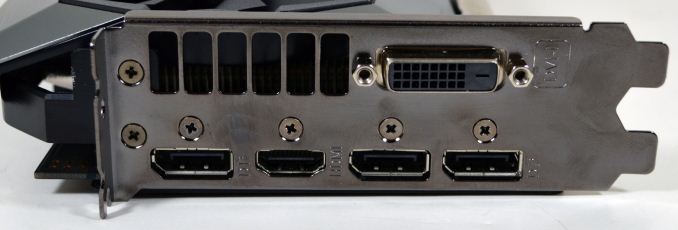













288 Comments
View All Comments
CiccioB - Monday, July 13, 2015 - link
If you still can't understand numbers but only can understand bar colors, I can sum up things for you for the same game (Crysys 3) also for the techpowerup review at 2560x1440 (the resolution for this kind of cards):At 780Ti presentation (nov 2013)
780ti 27
290X 26.3
At Fuxy X presentation (so, last week):
780ti 29.3
290X 29.4
So the 290X passed from -0.7fps to +0.1fps... WOW! That is a miracle!!!!!
Only a fanboy should think about that, or one that does not understand benchmarks numbers, can't interpret them and can only see bar length/relative positions.
You see a similar trend with Battlefield 3, where the 290X from -3fps became -0.3fps. And both cards have raised their FPS.
So, yes, AMD recovered a fraction of nothing and nvidia didn't crippled anything.
You have also not noted that in the meantime AMD changed the 290X policy on BIOS and custom, so all cards have become "uber" and better custom radiators allowed the card not to be throttled. So the advantage of this performance is reserved for those that have bought these cards, not for those that have bought the "not sampled" reference ones (can you remember the issue about those cards in retail market that have quite different performances with respect to those send to reviewers?). Yes, another miracle...
These are the MYTH I like reading about that only fanboy can sustain. These are the type of arguments that let you clearly spot a fanboy in the group.
CiccioB - Wednesday, July 15, 2015 - link
So, where are the facts sustaining your myth? I can't see them and it seems you can't provide them either.Yes, 780Ti a crappy investment... it was good the 290X with stuttering all over the place that still continues today with DX9 games.
FlushedBubblyJock - Wednesday, July 15, 2015 - link
Thank you CiccioB, I was wondering if another sane person was here.loguerto - Sunday, July 12, 2015 - link
This is the primary reason why i buy AMD, because i am not willing to change my hardware every year i brought a 290x in 2013 and in that period it was neck to neck with the 780 ti, after nearly two years the 290x destroys the 780 ti and beats constantly even the 970, which at it's release was ahead. The 970 remained there with the performance meanwhile the 290x continued improving. I am so glad i brought the 290x.CiccioB - Monday, July 13, 2015 - link
You are a poor man with no clue on what it is buying. Your justification for buying the cheaper card on the market are quite pitiful.I bet you can't report a single case where Kepler run faster before than it is today. Nor can't you evaluate how much this miraculous" AMD drivers have improved your gaming experience.
Can you? Let's see these numbers.
If not, well, just don't go on with this king of talking because it really picture you (all AMD fanboys) more ridiculous than you already are.
FlushedBubblyJock - Wednesday, July 15, 2015 - link
What the HELL are you babbling about ?The 980 wasn't realeased THEN at your "proof link" and the 290x is winning over the 780...
WHAT FANTASY HAVE YOU CONVINCED YOURSELF OF YOU AMD FANBOY... TIME WILL NOT HEAL THE FURY AND FURY X LOSSES !
mikato - Wednesday, July 15, 2015 - link
I agree. This would make a fantastic article - and a unique critical thinking subject that Anandtech is well positioned to undertake and is known for. It would certainly generate traffic and be linked to like crazy, hint hint.ajlueke - Friday, July 10, 2015 - link
"The R9 Fury offers between 8% and 17% better performance than the GTX 980, depending on if we’re looking at 4K or 1440p""I don’t believe the R9 Fury is a great 4K card"
"in a straight-up performance shootout with the GTX 980 the R9 Fury is 10% more expensive for 8%+ better performance."
"This doesn’t make either card a notably better value"
So at resolutions under 4K, which are the applications you recommend for the R9 Fury, it performs 17% better than the GTX 980 for 10% more price, and yet you conclude it is not a better value? Help me out here. It would be more accurate to say that neither card is a better value for 4K gaming, where the difference was indeed 8%. Any resolution below that, the Fury X is indeed a better value.
Ryan Smith - Friday, July 10, 2015 - link
At 1440p the Fury X is 8% faster for 10% more cost. From a value standpoint that's a wash.At 4K the lead is upwards of 17%, but on an absolute basis it's a bit too slow if you're serious about 4K.
ajlueke - Friday, July 10, 2015 - link
Thanks for the clarification. Also, I really appreciate the inclusion of the 7970 data, as I currently run a 3.5 yr old reference version of that card.